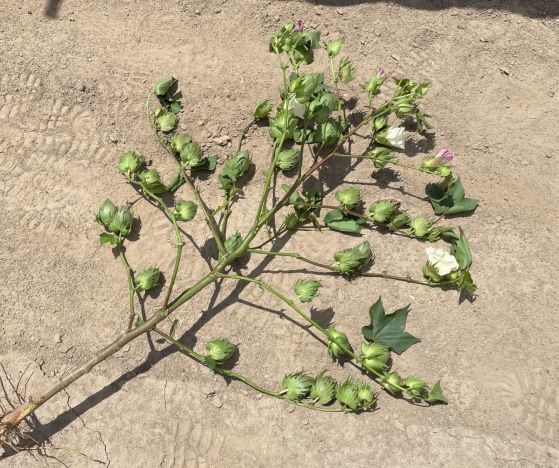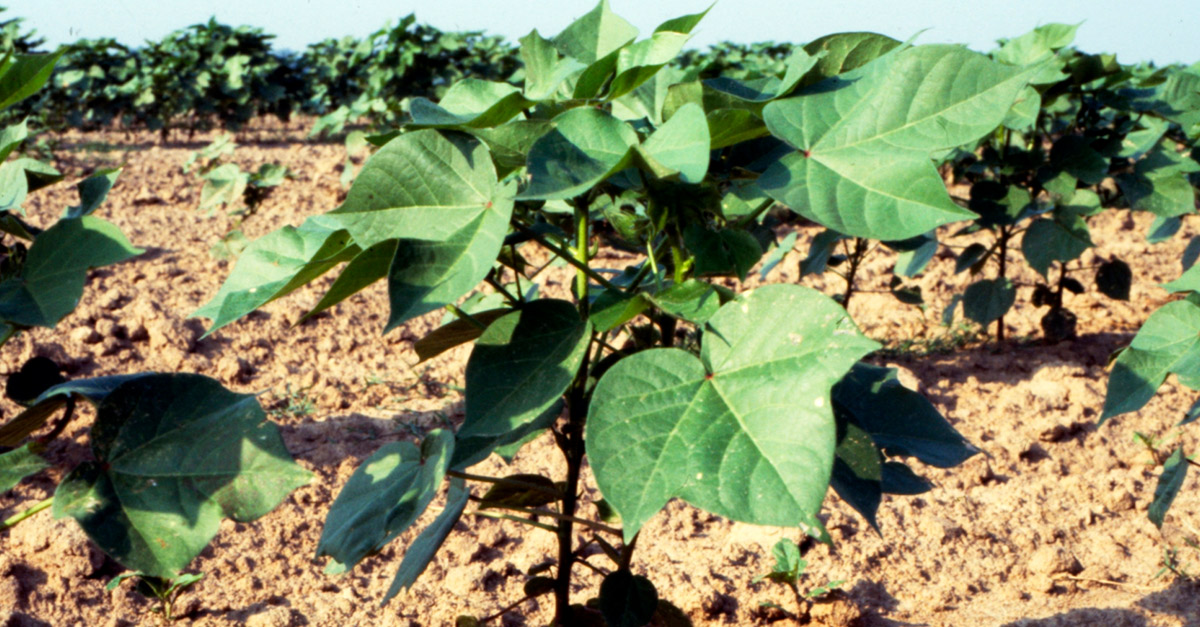Crop Scan Ag Report: Prime Time to Make Cotton
In most areas, August is the prime time to make a cotton crop. And, in most situations, the crop is looking pretty good despite increased insect pressure. Here’s what the Crop Scan consultants told us in early August.
Chad Harrell owns and operates Harrell Agronomic Services in Northeastern North Carolina.
Our earlier planted cotton is now approaching the sixth week of bloom and is starting to bloom out of the top. It shows to have a really nice boll load. The later cotton is now at the second or third week of bloom and most vulnerable to insects.
We have seen an increase in Lygus and stinkbug pressure over the past couple of weeks with almost all fields receiving at least one treatment. We are currently in the middle of the moth flight, and it seems to be a heavy one this year. Most of the two-gene cotton has been treated for worms, while the three-gene varieties still seem to be holding well.
Overall, the cotton crop is shaping up nicely. Almost all growers in this part of North Carolina received much needed rainfall the second half of July and early August. The cotton has really advanced in July, with adequate moisture and above average heat units putting some of our later planted cotton back on track. The early planted cotton shows a really nice boll load and yield potential.
As we look forward into late summer, the early cotton may only need to be protected one more time as it will become safe by the end of the month. However, the cotton planted at the end of May will need to be protected into September and should be managed aggressively with PGRs and insecticide applications. We will also need to keep a close eye out for worms on our three-gene cotton with the Vip3A toxin since we have seen above normal injury this year in corn with this technology.
I believe that we could see another year with above average yields if we can catch a couple more rains this month and avoid any hard lock in September.
Wes Briggs consults on cotton, corn, peanuts, soybeans, and small grains for growers in Georgia, Alabama, and Florida.
Cotton is shaping up for a good year, but we are far from cruise control. Earliness does not describe southwest Georgia’s cotton crop, as we have more late planted cotton compared to recent years.
August is hot and humid and brings many challenges. We like to call August “the stretch,” but August is very challenging. Everything we do in August is geared around earliness: PGR management, insect termination, disease, nematodes, too much or lack of moisture, even heavy boll load can be good stress. Detecting these and making timely corrections will be important this month.
Insect management is critical. Stinkbugs, mites, whiteflies, and heavy moth flights make for a long month. To date, our Bollgard 3 has performed well with no major worm escapes.
Boll load is ramping up fast now. Our cotton ranges from cracked boll to only 40 days old. We have sprayed a lot of cotton for mites this year with good success, but now we are seeing some late movement from whitefly. We’re currently in a heavy corn earworm/tobacco budworm/looper flight. We have noticed some slippage in beet armyworm and looper control behind certain products. Target spot, Corynespora, Stemphylium, and areolate are problems in some fields.
Irrigated cotton looks very good. Moving forward, we need dry conditions in late August through mid-September. If rains will hold off, cotton in southwest Georgia, north Florida, and southeast Alabama will be very good.
One concern is late stinkbug management, as good products like Bidrin are in short supply. Good choices will be limited, especially if whiteflies are present. We need to make timely stinkbug sprays based off thresholds over the next 30-45 days.
Tucker Miller is a Mississippi-based independent private consultant for cotton, soybeans, corn, peanuts, rice, and vegetables.
We have cut the water off on most of our cotton. It looks like a really good crop in most places.
 Photo: Tucker Miller
Photo: Tucker Miller
The Bollgard 3 cotton has performed well this year on the bollworm. We have seen a few escapes, but, for the most part, it has done well. We’re seeing a few open bolls in the dryland and in corners outside the pivot.
Plant bugs have been our biggest problem this year. We have cut a few acres loose but expect another application for the plant bugs in the later cotton.
We have had an umbrella over us all season, and I hope it stays up now until after harvest.
Mark Nemec is an independent agricultural consultant for cotton, wheat, grain sorghum and corn in the Blacklands and Brazos River Bottom area of Central Texas.
The cotton crop in Central Texas is wrapping up fast. The lack of rainfall and the extreme heat have taken its toll on this crop. July was the hottest on record with average high temperature of 103.7 degrees – beating 2011 by almost a full degree. Rainfall in Waco only registered 0.01 inches for the month. This pretty much took care of the dryland cotton.
Irrigated fields look somewhat better as long as they received enough water early enough. With the heat units we have accumulated, the irrigated cotton is maturing rapidly.
It looks like our harvest will be about a month earlier than normal with below normal yields.
Kerry Siders is Texas A&M AgriLife Extension Agent-IPM for Hockley, Cochran, and Lamb Counties.
Here on the Southern High Plains of Texas, cotton ranges from just beginning to bloom with more than 6 nodes above white flower (NAWF) to past physiological cutout with 2 NAWF. I must stop and preface these comments. These are irrigated acres that we have remaining, which is only about half of what was planted.
Using our IPM scouting fields as a representation of the area cotton crop, we see that 60% of fields have reached physiological cutout (<5 NAWF) this week. For those fields, we need approximately 350 DD60 more heat units to accumulate to be safe from bollworms. With the current weather trend of +20 heat units per day, those fields which have reached cutout should be safe from bollworms around August 21. The remaining 40% of the cotton acreage has such a wide range of maturity levels that it would be difficult to be as certain of when it will be safe from worms.
I would approach these later maturing fields from this angle. We historically say our last effective bloom date is August 15. This is a date in which a boll can be formed, have time to mature, and contribute to yield. Therefore, if we continue with this weather pattern into September and we are accumulating 20 HU/day, we can add 17 days to this date. This would give us a target of September 1 for those late fields needing to be scouted and protected from worm issues.
The point being is that NAWF is an important gauge of maturity and can help project time needed to be safe from worms and even manage irrigation.
Currently, bollworms are just beginning to be found infesting area fields and need to be scouted, particularly those varieties with lesser than Bollgard II or no Bt technology. Lygus, stinkbug, cotton aphids, and mites should be included in those scouting procedures. Cotton aphids have been the most common insect. To date, beneficial insects such as lady beetles and lacewing have kept up and cleaned up most of the infestations. Remember, cotton aphids thrive in skippy cotton and late nitrogen. Late nitrogen can also delay cotton maturity.
For more information on managing cotton insects in Texas, download the AgriLife Extension manual on insect control.
My priority list for the rest of August and going into September:
- Keep a close watch on cotton bollworms, larva pests in general, cotton aphids, and Lygus. Scout, apply at economic threshold, and act on good information.
- Continue with late season weed control: residual herbicide, cultivate, hoe, whatever it takes to keep the pigweed from going to seed. It is a numbers game.
- Do the best you can to keep up with water demands of the cotton. Remember, we make cotton in August.















